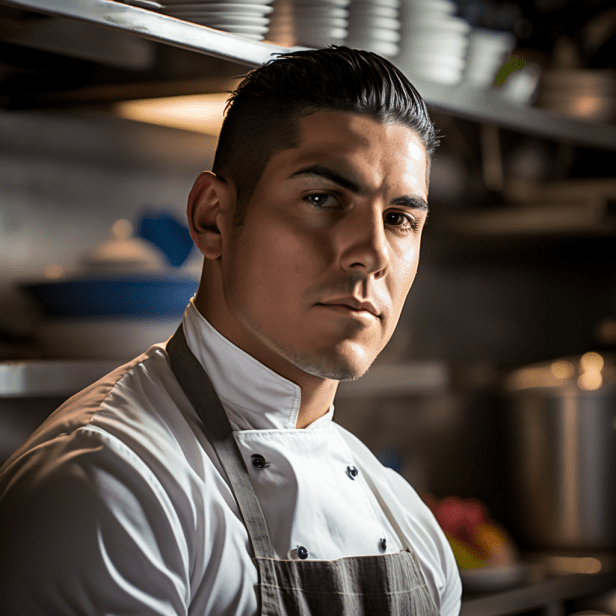Babaocai, or the Eight-Treasure Stir-Fry, is a dish that carries both history and flavor in every bite. It’s a Chinese classic that brings together eight distinct ingredients — vegetables, meat, mushrooms, and nuts — into one pan, creating a harmony of textures and tastes. The method is straightforward but requires attention to detail, especially in preparation and timing. This dish isn’t just about cooking; it’s about honoring tradition and making a meal that’s both nourishing and satisfying. For anyone interested in Chinese home cooking or looking to add a versatile, nutrient-packed dish to their repertoire, Babaocai offers a perfect balance of savory and sweet, crunchy and tender.
Key Takeaway
- Babaocai combines eight varied ingredients for a balanced, flavorful stir-fry.
- Proper prep, including marinating and blanching, ensures even cooking and texture.
- The dish carries cultural significance, symbolizing abundance and good fortune.
The Essence of Babaocai: What Makes It Special
Babaocai literally means “eight treasures vegetables,” but it’s more than just a list of ingredients (1). It’s about the balance of flavors and textures that come together in a single dish. The “eight treasures” usually include a mix of vegetables like bamboo shoots, carrots, celery, and Chinese cabbage, combined with proteins such as pork slices, shrimp, or tofu, and enhanced by mushrooms like shiitake and wood ear fungus. Nuts or peanuts often add a crunchy contrast.
The Symbolism Behind the Eight Treasures
The number eight is considered lucky in Chinese culture, symbolizing prosperity and good fortune (2). Babaocai embodies this belief by bringing together eight different ingredients, each contributing its own unique flavor and texture. This tradition makes the dish popular during festivals like Chinese New Year, where abundance and variety are celebrated (3).
Ingredients: The Building Blocks of Babaocai
The ingredients can vary widely depending on what’s available or preferred, but a traditional Babaocai usually includes:
- Vegetables: Bamboo shoots, carrots, celery, Chinese cabbage, water chestnuts, peapods
- Mushrooms: Shiitake mushrooms, wood ear fungus
- Proteins: Pork slices, shrimp, tofu (optional)
- Nuts: Peanuts or other nuts for crunch
- Seasonings: Soy sauce, oyster sauce, sesame oil, Shaoxing wine, sugar, ginger, garlic
Each ingredient is chosen for its texture and flavor contribution. For example, bamboo shoots add a crispness, shiitake mushrooms bring umami depth, and pork slices provide savory richness.
Preparation: Setting the Stage for a Perfect Stir-Fry
The key to a successful Babaocai lies in preparation. The ingredients need to be cut into uniform, bite-sized pieces to ensure even cooking. Some tougher vegetables like carrots or celery might be blanched briefly to soften them without losing their crunch.
Marinating the Meat and Seafood
Marinating pork slices or shrimp in a mixture of soy sauce, Shaoxing wine, and a bit of cornstarch helps tenderize the meat and adds flavor. This step also prevents the meat from drying out during stir-frying.
Pre-cooking Certain Ingredients
Some ingredients, especially proteins, are partially cooked before combining with the vegetables. This avoids overcooking delicate vegetables and ensures everything finishes cooking at the same time.
The Stir-Fry Method: Bringing It All Together
A wok is the traditional choice for stir-frying Babaocai. Its shape allows for high heat and quick cooking, which is essential to preserve the texture and color of the ingredients.
Step-by-Step Cooking Process
- Heat the wok: Add oil and heat until shimmering.
- Cook the meat or seafood: Stir-fry the marinated pork or shrimp until just cooked, then remove and set aside.
- Sauté aromatics: Add ginger and garlic, frying briefly to release their fragrance.
- Add vegetables: Start with harder vegetables like carrots and bamboo shoots, then add softer ones like Chinese cabbage and mushrooms.
- Combine ingredients: Return the meat or seafood to the wok.
- Season: Add soy sauce, oyster sauce, a splash of Shaoxing wine, and a pinch of sugar to balance flavors.
- Finish with nuts: Toss in peanuts or other nuts for texture.
- Cook briefly: Stir-fry until everything is tender but still crisp.
Balancing Flavors and Textures
The goal is to have a dish that’s savory with a hint of sweetness, crunchy yet tender. The soy sauce and oyster sauce provide umami richness, while sugar balances the saltiness. Sesame oil added at the end gives a subtle aroma.
Variations and Adaptations
Babaocai is versatile. Depending on the region or personal taste, ingredients can be swapped or added. Some versions include yam beans, potatoes, edamame, or preserved radishes. Tofu can replace meat for a vegetarian option. The number eight is flexible — the focus is on variety and balance.
Cultural Context: Babaocai’s Place in Chinese Cuisine
This dish has roots that might stretch back to the Qing Dynasty or earlier. It’s found in various forms across China and even in Korean and Japanese cuisines, where it’s known as palbochae and happosai, respectively. Babaocai is often served as a side dish or over rice, making it a staple in Chinese home kitchens and a favorite during celebrations (4).
Practical Tips for Home Cooks
- Uniform cutting: Ensures even cooking and better presentation.
- High heat: Keeps vegetables crisp and colors vibrant.
- Don’t overcrowd the wok: Stir-fry in batches if needed to avoid steaming.
- Adjust seasoning: Taste as you go; soy sauce and oyster sauce vary in saltiness.
- Use fresh ingredients: The dish relies on the natural flavors of its components.
FAQs
What exactly is Babaocai and why is it called an eight-treasure dish?
Babaocai is a classic Chinese dish that combines eight different ingredients into one flavorful stir-fry. The name literally means “eight treasures” in Chinese, though you don’t need exactly eight items. This traditional recipe typically includes mixed vegetables like bamboo shoots, shiitake mushrooms, and Chinese cabbage, plus protein like pork slices or tofu optional additions. It’s a colorful stir-fry that represents abundance and variety in Chinese cuisine, making it perfect for family meals and special occasions.
What vegetables and ingredients do I need to make authentic Babaocai?
A traditional Babaocai recipe calls for bamboo shoots, shiitake mushrooms, water chestnuts, wood ear fungus, Chinese cabbage, carrot slices, peapods, and celery stir-fry components. You can add pork slices for protein or keep it as an Asian vegetable dish. The key is creating a balanced texture with crunchy water chestnuts, tender mushrooms, and crisp vegetables. This vegetable medley creates the perfect nutrient-packed dish that’s both satisfying and healthy for your Asian home kitchen.
How do I prepare the sauce for this Chinese stir-fry?
The sauce is simple but essential for this savory dish. Mix soy sauce (about 2-3 tablespoons) with a cornstarch slurry made from 1 tablespoon cornstarch and 2 tablespoons water. Add a pinch of sugar for that sweet and savory balance that makes this umami-rich dish so appealing. Some cooks add a splash of rice wine or sesame oil. This light soy base coats all the ingredients without overwhelming the natural flavors of your eight-ingredient dish.
What’s the proper wok cooking technique for making Babaocai?
Successful wok cooking requires high heat and quick movements. Heat your wok until it’s smoking, add oil, then start with aromatics like ginger garlic. Add harder vegetables first (carrots, bamboo shoots), then softer ones (cabbage, peapods). This Chinese cooking method ensures everything cooks evenly while maintaining that perfect crunch. Keep ingredients moving constantly – this fast cooking technique is what makes stir-fry different from other cooking methods. The whole process should take just 5-7 minutes for this quick stir-fry.
Can I make Babaocai ahead of time for meal prep?
Yes. Babaocai works great for meal prep since it tastes even better the next day. This Chinese comfort food keeps well in the fridge for up to 4 days. You can prep all your vegetables in advance and store them separately, then do the actual stir-frying when ready to eat. The flavors meld beautifully overnight, making it perfect for busy weeknight dinners. Just reheat gently in a pan or microwave, and you’ll have a delicious Chinese dinner idea ready in minutes.
What makes this dish authentically Chinese compared to other stir-fries?
This authentic recipe follows traditional Chinese cooking principles of balancing colors, textures, and flavors. Unlike Western stir-fries, Babaocai emphasizes the natural taste of each ingredient rather than heavy sauces. The Chinese home-style approach uses minimal seasoning to let the vegetables shine. This Chinese heritage dish has street food roots but became a beloved family recipe because it’s both nutritious and economical, using whatever vegetables are fresh and available in your kitchen.
Do I need special Chinese wok skills to make this flavorful stir-fry successfully?
Not really! While professional Chinese wok skills take years to master, this simple stir-fry is perfect for home cooking beginners. The key is having everything prepped before you start cooking since this stir-fried delicacy comes together quickly. Keep your heat high, move ingredients constantly, and don’t overcrowd the pan. Even without restaurant-level technique, you can create this traditional flavors-packed dish that rivals any Chinese restaurant. Practice makes perfect, and this forgiving recipe is great for building confidence.
How can I customize this classic Chinese dish for different dietary needs?
This versatile classic Chinese dish adapts easily to various diets. For vegetarians, skip the pork slices and add extra tofu or more mushrooms. The base vegetable medley works for most eating styles. You can reduce sodium by using less soy sauce, or make it gluten-free with tamari. Add more protein for fitness goals, or keep it light as an Asian vegetable dish. The beauty of this home cooking staple is its flexibility – use whatever vegetables you have while maintaining the colorful, balanced approach that defines authentic Babaocai.
Conclusion
Making Babaocai is more than just following a recipe. It’s about appreciating the harmony of different ingredients and the balance of flavors that define traditional Chinese cooking. The dish fits well into home cooking routines because it’s quick, adaptable, and packed with nutrients (5). Whether served as a side or a main over rice, Babaocai offers a colorful, flavorful meal that honors Chinese culinary heritage and satisfies the palate. For those willing to try, it’s a rewarding way to bring a bit of tradition and taste into the kitchen.
References
- https://www.gotheborg.com/glossary/eightpreciousthings.shtml
- https://www.istitutoitalocinese.org/en/eight-is-a-lucky-number/
- https://ethnojunkie.com/?p=5272
- https://thewoksoflife.com/spicy-eight-treasures-stir-fry/
- https://english.shanghai.gov.cn/en-Homestyle-travelinshanghai/20231205/190163df0efb425eaf66336484a09984.html
Was this helpful?

I am a skilled chef assistant with a passion for Asian cuisine, I have honed my craft through formal training at At-Sunrice GlobalChef Academy and years of experience in the culinary industry. I have extensive knowledge of cooking techniques and herbs and spices, with a particular focus on traditional Chinese dishes. I’m also an author of the book “Delicious Keto Low Carb Chinese Food for Busy Moms and Fitness Enthusiasts” which is sold on Amazon. On my blog, bowlakechinese.com, I share my expertise in Asian cuisine and provide tips and recipes for those interested in low carb Chinese cuisine.
